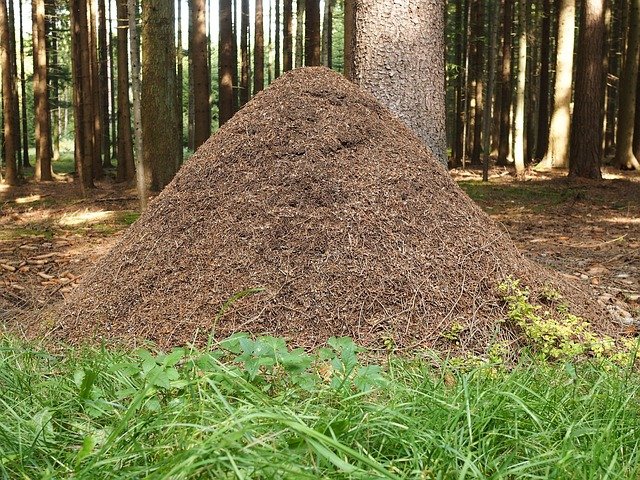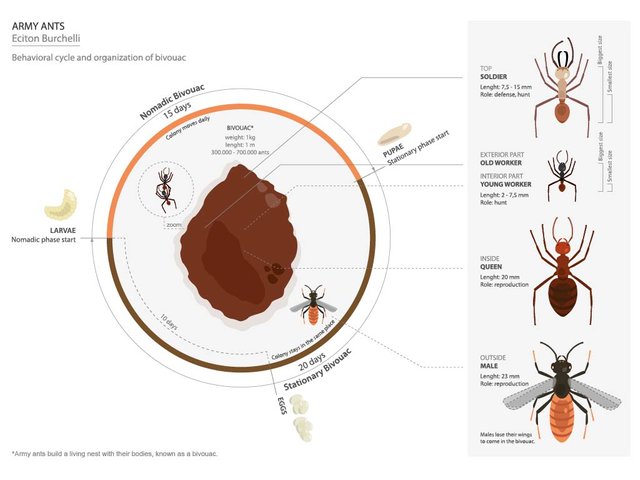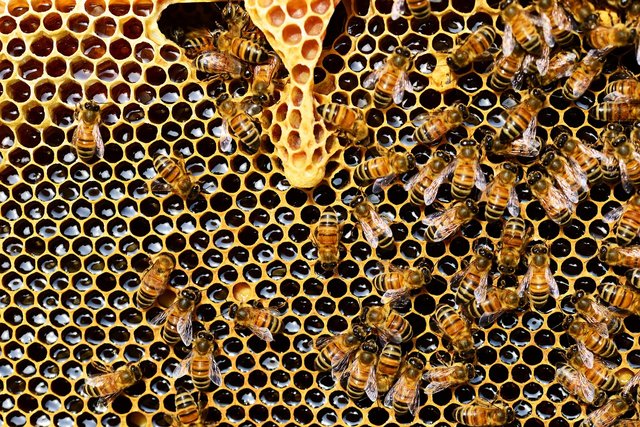How Economic and Ecological Systems Grow Large and Complex
"The problem is precisely how to extend the span of our utilization of resources beyond the span of the control of any one mind; and therefore, how to dispense with the need of conscious control, and how to provide inducements which will make the individuals do the desirable things without anyone having to tell them what to do." – Friedrich A. Hayek. The Use of Knowledge in Society. The American Economic Review, 1945

In Hong Kong and many thousands of other large cities, millions of individuals each make their own decisions as they navigate, negotiate, trade, and prosper! A great deal of productive activity occurs without anyone coordinating the actions of all these individuals. How is this possible?
Photo by Steven Wei on Unsplash
Only recently did I read Hayek’s article quoted above in its entirety, and I’m glad that I did. It helped me make sense of concepts I’ve been encountering while reading about Complex Adaptive Systems and Group Selection. Hayek was examining the problem of how to “construct a rational economic order”. Here I’ll leave aside the lack of an unambiguous definition for rationality and go straight to the fascinating and very important substance of his argument.
During the seven decades since Hayek wrote that brilliant article, ecological studies have confirmed that nature had already repeatedly solved essentially the same problem, long before the evolution of Homo sapiens. I’ll present a few examples and discuss their common features. Finally, I’ll begin to introduce the best current ideas as to how nature has arrived at very effective solutions to the vastly complicated resource allocation problems that would otherwise make large, dense populations utterly unsustainable for any species.

Some ant colonies, such as the one that built this giant nest, may include millions of individuals.
Photo by Ratfink1973.
Eusociality
In the ecological sense, this refers to species that reproduce communally, divide their labor among specialized castes, and form multi-generational colonies. Some species of ants, bees, termites and wasps are eusocial. Queens, workers, warriors, and other specialized castes are well known in such species. In many cases the castes differ markedly in their physical features as well as their behavior, despite all belonging to the same species.

Graphic by Enrica Lo Cicero, DensityDesign Research Lab.
For example, army ants form large colonies composed of hundreds of thousands to even millions of individuals. These include the African ‘driver’ ants (Dorylus), which are reported to have colonies up to 20 million strong, and the even larger Eciton Burchelli ants of Central and South America shown in the graphic above. Their armies commonly hunt arthropods and sometimes even small mammals that no individual ant could defeat.
Honey Bees

Photo credit: PollyDot at Pixabay
Probably more familiar to many of you, the honey bee is a classic example of a eusocial insect that forms large colonies. The bee hive has aptly been described as a “Factory within a Fortress”. Eusocial cooperation allows for both increased production and improved defense, compared to free living or even merely social animals. The honey bee has succeeded so well that many plants and crops depend on them as pollinators. In fact, this recent study found that the western honey bee is the most important single species for pollination globally.
A rare but very successful strategy
Most known Eusocial species are insects, although some crustaceans and small mammals (mole rats) also live by this strategy. Ants and termites account for only about 2% of the 900,000 or so species of insects, but their relatively few species are so successful that they make up over half of the total insect biomass.
Eusociality seems to have evolved in environments that provided some natural defense, such as underground burrows. The “hard-wired” (by genetics) implementation of this strategy may be a key weakness, for example when confronted with sudden environmental change.
For more details about Eusociality see the excellent article Eusociality: Origin and Consequences by Edward O. Wilson and Bert Hölldobler.
Altruism
Many castes in eusocial species do not even reproduce, or do so only very rarely when they violate the norms of their system, which are in some cases actively enforced via punishment. This is a kind of altruism, in that they work for the benefit of their colony, without themselves procreating. This implies that natural selection cannot operate only at the level of the individual.
Nevertheless, many scientists argued in very strong terms that natural selection could not operate on groups, especially during the latter half of the twentieth century. Some explained altruism in terms of Kin selection (benefiting close relatives might justify forgoing one’s own reproduction). However, later evidence called that into question as general explanation. For example, in some cases less closely related colonies are actually more productive than closely related colonies of the same species.
We humans, at least most of us, have strong social and even psychological preferences for communication, cooperation, and altruistic behavior. I think this must be because they are necessary for any large population to thrive. So nature found ways to make these things possible, and furthermore made them an inherent part of our biology.
Group and Multilevel Selection
The idea is that natural selection can operate on groups, which could include tribes, colonies, and even larger units such as the ‘races’ of honey bees or human nation states. In other words, the groups compete with each other, with the outcome depending on the composition and social organization of each group. Originally suggested by Charles Darwin, this concept later fell out of favor, particularly during the mid twentieth century. However, it has become much more widely accepted over the past couple of decades.
Group selection is now widely considered to have been a major driver of human evolution, both genetic and cultural. I find the arguments in favor of group selection quite compelling, but even today it’s role is not universally accepted. I want to write more about the history of this concept and its relevance to human societies, after I study it more carefully.
Social Complexity as a Prerequisite for Large Societies
Eusocial species with larger colonies tend to have more complex social organization. Like typical scientists, Wilson and Hölldobler (PNAS 2005) state that “The most important predictor of evolved social complexity is mature colony size.” Although that’s a perfectly valid diagnostic way to look at it, their statement puts the cart before the horse. Social complexity, by allowing more efficient resource allocation, makes larger colonies possible.
Human social organization is not hardwired by genetics to nearly the extent as in other social animals. Language and culture have allowed humans to cooperate and compete on scales vastly larger than those of eusocial insects. We not only develop new technologies very quickly, but they spread even more quickly among us. That is why each of us can now network dynamically with many individuals who are not our relatives, whom we will never meet in person, and who may not even speak the same language. This makes us even more capable of transcending the limitations of the individual.
The wonderful thing is that we can do this without giving up individual liberty to nearly the degree that eusocial insects do! We have, however, become more inter-dependent, as we have specialized more and more, to the point that most of us modern humans could not survive alone or in small groups.
"Civilization advances by extending the number of important operations which we can perform without thinking of them." --Alfred North Whitehead
S. Lan Smith
Kamakura, Japan
July 11, 2018
Thanks to all those who made their artwork freely available for use herein.
Nature can be comprehended as the investigation of environments, which are full scale frameworks of connecting biotic and abiotic components, all things considered it is an interdisciplinary science that sits at the crossing point of the physical and organic sciences including components of science, geology and earth science.This is the place complex frameworks get particularly precarious to clarify, on the grounds that they're interrelated.
Free Upvotes

ENJOY !
Congratulations @lanimal! You received a personal award!
You can view your badges on your Steem Board and compare to others on the Steem Ranking
Vote for @Steemitboard as a witness to get one more award and increased upvotes!